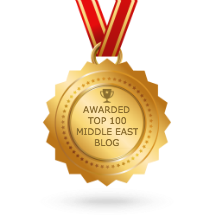Seeing the Mid-East through football (Review of JMD book)
The game is so
popular that rulers try to commandeer it to enhance their prestige
By
 iddle East. He discovered that
studying the sport could be very revealing of the politics and social currents
of the entire region.
iddle East. He discovered that
studying the sport could be very revealing of the politics and social currents
of the entire region.
PHOTO: REUTERS
JUL 9, 20165:50 AM
The Turbulent World of Middle East Soccer - By James M Dorsey
JAMES Dorsey is not
a fan of football, and yet, for the past 11 years, he has taken a keen interest
in soccer in the Middle East. He discovered that studying the sport could be
very revealing of thepolitics and social currents of the entire region. He
writes a blog on the subject and has now written a book.
Football is so
popular in the Middle East that it should perhaps not be surprising that rulers
try to commandeer it to enhance their prestige. Saddam Hussein’s son, Uday,
notoriously took a direct hand in managing the Iraqi national team, who were
extravagantly rewarded for victories, but tortured and humiliated for whatever
Uday saw as their failures. One former national team member recalls players
being electrocuted, forced to play barefoot with a concrete ball in
temperatures of 55 degrees C and having their heads shaved when the team failed
to qualify for the World Cup. Al Saadi, son of Libyan leader Qaddafi, took
charge of the Libyan Football Federation and is accused of murdering a player
who accused him of being part of a dictatorship and corrupting the country.
Political rivalries
in Turkey have often been expressed in football, whether in attitudes towards
or of Kurdish players, the involvement of football fans with a record of enmity
in protests over plans to redevelop Istanbul’s Gezi Park as a mall, or in the
contest between president Erdogan and his rival, Fethullah Gulen, for control
of Fenerbahce football club.
In Egypt, Cairo
clubs al-Ahly and Zamalek were founded before the first world war as,
respectively, nationalist and pro-monarchy football clubs. In modern times,
networks of ardent fans known as Ultras gained experience in street clashes
with the police, which they put to use when they came out in support of the
2011 demonstrations aimed at bringing down the Mubarak regime.
Dorsey argues that,
without the Ultras participation, the activists in Tahrir Square might well
have given way under attacks from the police and thugs mobilised by the regime.
Despite arrests, the slaughter of 74 al-Ahly supporters by rival fans after a
2012 match in Port Said which the security forces, at the very least, allowed
to happen, and the closure of most games to fans, Ultra networks remain strong
and a cause of anxiety to the present regime.
Dorsey compares
Bnei Sakhnin, a successful club based in the Israeli Palestinian town of
Sakhnin, with Beitar, the Jerusalem club that has always been associated with
the political right in Israel. Bnei Sakhnin’s team includes Jewish players, but
Beitar takes pride in being the only Israeli club never to have hired a
Palestinian player. When Bnei Sakhnin won an Israeli championship in 2004,
Beitar fans declared a day of mourning.
Football has been a
site of struggle over the status of women. In Iran and the Gulf states, efforts
by women to be allowed to attend matches have met with fierce resistance from
religious conservatives, but, little by little, women’s football is gaining
ground. Iran’s ban on women’s soccer was lifted in 1998, Kuwait’s in 2010 and
there’s a women’s soccer league that plays behind doors in the UAE. Saudi women
footballers play semi-clandestinely. The Palestinian national women’s team’s
members come from the less conservative parts of their country.
Dorsey argues that
football is at present the only rival to religion in its mass appeal in the
Middle East, following the decline of nationalist and leftist political
movements. It seems that many Islamists might think so too, though they
disagree strongly in their attitudes towards it.
While most
Salafists regard football as a diversion from religious devotion, Osama bin
Laden was an Arsenal fan. Other Islamists have seen football as positive.
Hamas’s leader in Gaza, Ismail Haniyeh, is a football enthusiast and used to
play for a local team. Hassan Nasrallah, Hezbollah’s leader in Lebanon, helped
secure sponsorship of a popular club by al-Manar, the Hezbollah-run television
station.
Dorsey concludes
with the chapter “Competition on the World Stage”, which describes the
consequences of Qatar’s successful bid to host the 2022 World Cup, murky
goings-on around the leadership of the Asian Football Confederation, and Gulf
investment in European football clubs.
The Turbulent World
of Middle East Soccer is a highly original work. Time and time again, one is
left with the feeling of looking beneath the surface of the familiar news
reports from the region at deeper trends and telling details that are more
revealing of what is going on in the Middle East than conventional news
reports.
John Gee is a Singapore-based freelance writer
John Gee is a Singapore-based freelance writer




Comments
Post a Comment